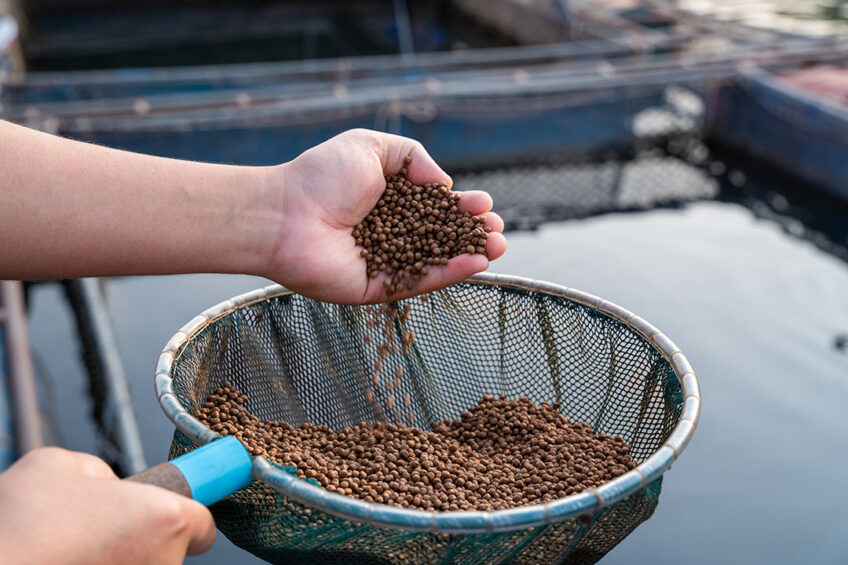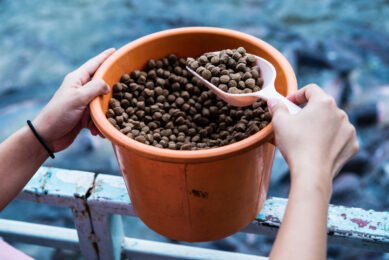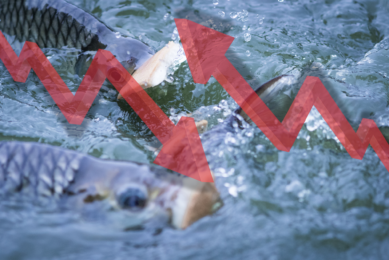Replacing fishmeal and fish oil in aquafeed

This article is part of our premium content. You can read this article for free as a gift from us. Would you like to read more articles like this? For just €4.95 per month, you have unlimited access to all our premium content.
Rising feed costs and the need to produce more sustainably are major concerns for aquafeed industries. This is why there is a need to find alternative sources for fishmeal and fish oil.
Aquaculture is the fastest-growing food production sector in the world. It accounts for 17% of animal-derived and 6.5% of total protein consumption globally. According to the United Nations Food and Agriculture Organization, by the year 2030, fish consumption by the global population will reach 232 million metric tonnes. To meet this demand, global aquaculture production needs to expand, which in turn enhances the demand for aquafeed.
High costs of aquafeed
Aquafeed comprises 30-70% of the total operational costs in aquaculture production systems with fishmeal and fish oil as the main sources of proteins and lipids. Fishmeal is the most expensive protein source and nearly 4-5 tonnes of whole fish are needed to produce 1 tonne of dry fishmeal. Fish oil is the major source of highly polyunsaturated fatty acids and polyunsaturated fatty acids. However, the price of both fishmeal and fish oil are increasing in the USA, which makes the growth of aquaculture production costly and unsustainable. Therefore, it is essential to find inexpensive, nutritionally enriched alternative sources of proteins and lipids.
Alternative sources for fishmeal
Alternative sources for fishmeal are classified into animal-based protein sources and plant-based protein sources. Animal-based protein sources include poultry byproduct meal, meat and bone meal, blood meal, krill meal, insect protein, housefly maggot meal, silkworm pupae meal, and earthworm meal. These alternative protein sources are discussed in the next section.
Poultry byproduct meal
Poultry byproduct meal has high apparent digestibility, a relatively high protein content, and a lower price compared to fishmeal, which makes it a proper candidate to replace 50% to 100% of fishmeal in aquafeed without any compromise on weight gain and feed conversion ratio.
Meat and bone meal
Meat and bone meal has a high protein content, a well-balanced amino acids profile, high digestible mineral content such as phosphorous and calcium, and a lack of anti-nutritional factors. Meat and bone meal can replace fishmeal from 20% up to 100%, depending on the fish species.
Blood meal
Slaughterhouse wastes such as blood are potential protein sources that can be used to replace fishmeal in aquafeed due to their high-quality protein content, their high digestibility (80-99%) and the fact that they are a proper source of lysine and histidine, and haem iron, which promotes oxidation of feed components. Fishmeal can be replaced by blood meal from 6% up to 100% with no adverse effects on growth, survival, and feed conversion, depending on the fish species.
Krill meal
Krill meal, which has 60% protein content, well-balanced amino acids, 25% lipids, 40% phospholipids, and omega-3 fatty acids, is used as a feed additive to improve growth, yield, stress resistance, fillet quality, and overall fish health. Krill meal increases palatability, improves feeding depression and reduces fish mortality.
Insect protein
Insect protein sources comprising cricket meal, mealworm, and black soldier fly larvae meal are novel feed ingredients with high protein and fat content that can effectively be included at up to 30% in aquafeed. According to the Food and Agriculture Organization of the United Nations insect meal could replace between 25% and 100% of fishmeal with no adverse effects.
Housefly maggot meal
Housefly maggot meal, which is produced from the larval stage of the housefly Musca domestica, contains 39-61.4% crude protein, 12.5-21% lipids and 5.8-8.2% crude fibre. Housefly maggot meal can replace between 25% to 100% of fishmeal and provide sufficient protein for growth with a feed conversion ratio equivalent to fishmeal with no anti-nutritional or toxic factors.
Silkworm pupae meal
Dried silkworm pupae contain 52-72% crude protein, essential amino acids such as valine, methionine phenylalanine, lysine, and cystine, and are less expensive compared to fishmeal without compromising growth and feed conversion ratios. It has been suggested that a combination of soybean meal and silkworm pupae meal could completely replace fishmeal in aquafeed.
Earthworm meal
Earthworm meal contains high omega-3 fatty acid, 50% to 70% protein, 5% to 10% lipids, and sufficient sodium, calcium, and potassium to partially replace fishmeal in catfish and all tropical fish diet.
Plant-based protein sources
Soybean meal has a high amino acids content, but contains low methionine and it can substitute fishmeal from 80% to 100%, depending on the fish species with no adverse effects on growth performance or nutrient utilisation. Wheat gluten can substitute up to 40% of fishmeal in feeds for salmon and trout. A combination of soybean meal and corn gluten meal could replace up to 69% of fishmeal without any negative effects on growth and feed intake. Canola meal has higher levels of methionine than soybean meal and a mixture of canola meal and soybean meal could be used as a substitute for fishmeal up to 60%.
Algae such as spirulina and seaweeds are potential alternatives to fishmeal due to their high amino acid content, omega-3, and omega-6 fatty acids content, which lead to a significant improvement in growth rates, health, colour, and disease resistance.
Alternative sources for fish oil
Vegetable oils
Vegetable oils such as soybean, linseed, rapeseed, sunflower, palm oil, and olive oil are sustainable alternatives for fish oil in aquafeeds due to their availability and cost-effectiveness. However, to partially replace fish oil with vegetable oil, sufficient essential fatty acids should be supplemented in the diets to meet the requirement. Vegetable oils can substitute 50% to 100% of fish oil in aquafeed without affecting growth and feed efficiency; however, they significantly impact tissue fatty acid composition and metabolism.
Animal-based oils
Animal fats including poultry fat and beef tallow contain 28.5% and 47.5% saturated fatty acids, and 20% and less than 4% polyunsaturated fatty acids, respectively. Substitution of 50% fish oil by animal-based oils has no negative impact on growth performance. However, 75% fish oil substitution by chicken fat reduces growth performance.
Concluding remarks
Aquafeed comprises 30-70% of the total operational cost in aquaculture production systems, with fishmeal and fish oil as the main sources of protein and lipids. Unsustainable production and increasing price are major concerns for aquafeed industries; this is why it’s necessary to find alternative sources with proper nutritional value and price, without compromising growth performance, health, and feed efficiency. Furthermore, it is important to note that the level of fishmeal and fish oil replacement is species-specific and varies according to fish size and feeding habits.
This article is based on the publication: Hodar, Ashish & Vasava, Rajesh & Mahavadiya, D & Joshi, Nilesh. (2020). Fish meal and fish oil replacement for aqua feed formulation by using alternative sources: A review.











